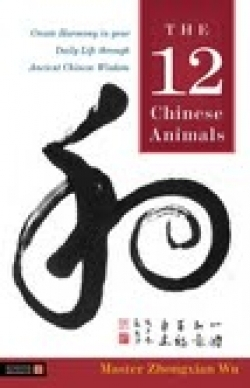The 12 Chinese Animals
Create Harmony in Your Daily Life Through Ancient Chinese Wisdom
- 2010 INDIES Winner
- Silver, Body, Mind & Spirit (Adult Nonfiction)
What does the average Westerner know of Chinese astrology? For most, the abbreviated version printed on the paper placemats of many Chinese restaurants is all the knowledge one can claim. What a shame, because the twelve animal signs of the Chinese zodiac represent a complex and fascinating approach to greater self-awareness.
In his newest of nine books, Master Zhongxian Wu, a teacher of Qigong and martial arts, explains some of the principles behind the twelve Chinese animal signs.
Readers may be surprised to learn that in this ancient astrological system, known as BaZi, each person has not one, but four animal signs: one each for the year, month, day, and hour of birth. Wu provides charts with which the reader can discover his or her animal signs for all but the day of one’s birth; the complexity of the Chinese calendar and the book’s page limit necessitate the exclusion of daily charts. Wu does provide a detailed account of the characteristics of each animal type, including information on personality, health, personal relationships, career and finance, and beneficial foods and colors.
To better understand the spiritual implications of each animal sign, Wu provides the reader with a taste of the Yijing system, an ancient text composed of 64 hexagrams, each of which is a union of two trigrams. By examining particular hexagrams, one can learn something of the original ideas associated with each animal. For example, the hexagram for the Ox is Lin, and is composed by joining the trigram for Kun (Earth) to the trigram for Dui (Lake). Wu writes, “Lin…is an image of a Lake within the Earth. Lake is the symbol for changing old patterns…Earth is the symbol for holding yourself stable or centering your mind. The hexagram Lin is an image of a person with a stable and rooted mind, looking down from a high position and able to clearly see transformation occurring beneath the surface.” Thus, a person with an Ox sign might be expected to share these qualities. Wu also shares the mudra (symbolic hand gesture or position) and a meditation for seeking inner peace through the awareness of each animal.
Master Wu is the lineage holder of four different schools of Qigong and martial arts. His many books and articles have illuminated the philosophical and historical foundations of China’s ancient life sciences.
With so little information on this ancient system of awareness and divinity available to the English-speaking world, The Twelve Chinese Animals should be of particular interest to those practicing Qigong, or studying the teachings of Yijing, and will be both accessible and of interest to those curious about astrology, China, or seeking inner peace through meditation.
Reviewed by
Jennifer Sperry Steinorth
Disclosure: This article is not an endorsement, but a review. The publisher of this book provided free copies of the book and paid a small fee to have their book reviewed by a professional reviewer. Foreword Reviews and Clarion Reviews make no guarantee that the publisher will receive a positive review. Foreword Magazine, Inc. is disclosing this in accordance with the Federal Trade Commission’s 16 CFR, Part 255.

